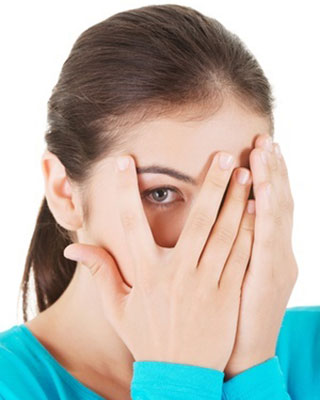Understanding Rosacea
By Lisa Young – Salon Director
 Who doesn’t want beautiful skin ? A skin that is clear, blemish free and radiates health. Unfortunately, for some people a skin condition such as rosacea makes this seem impossible.
Who doesn’t want beautiful skin ? A skin that is clear, blemish free and radiates health. Unfortunately, for some people a skin condition such as rosacea makes this seem impossible.
Rosacea is a condition that according to the NHS, affects 1 in 600 people diagnosed in the UK each year with most cases typically aged between 30 and 50. It affects both men and women (but is more common in women) and mostly fair skinned people although there are cases in Asian and African origins.
It is especially prevalent in people from North Europe such as the UK. People that suffer from this condition often reference the impact it has on their confidence as well as coping with the side effects and symptoms.
Rosacea is an autoimmune disorder. Also known as “cuperosis”, it presents itself as red blotchy skin on the face, especially around the forehead, nose and chin.
A bad outbreak is often, but not always, accompanied by bumpy pus filled spots and it is commonly misdiagnosed as acne. Unfortunately, because the cause (although debatable) is different to acne, it needs to be treated very differently to acne.
People prone to Rosacea seem to be of Northern European origin, especially the UK where Irish, Scottish and Welsh origins mean that the typically fair skinned amongst us may be more prone to the condition. Most suffers report how embarrassed they are about the look of their skin as it looks like they are frequently blushing or, worse case, like they have a drink problem !
Symptoms of Rosacea
- Stinging and burning sensation.
- Sporadic and frequent red flushes or blushing.
- Visible permanent redness.
- Spots (pustules and papules).
- Broken capillaries especially around and on the nose, apples of the cheeks and chin.
- Often but not always accompanied by a runny nose.
- Often the skin is sensitive.
Types of Rosacea
There are 4 different levels of Rosacea :
- Erythematotelangiectatic rosacea
Typically regular flushing and / or persistent redness. There may be some broken blood capillaries that are visible especially over the cheeks and nose.
- Papulopustular rosacea
Typically a persistent redness is visible accompanied by a bumpiness to the skin or in some instances pustular spots. Type 2 Rosacea looks similar to acne hence why it is often mistaken as acne.
- Phymatous rosacea
An extreme type of Rosacea where the skin thickens. This is especially associated with the nose, which becomes enlarged.
- Ocular rosacea
A type of Rosacea that affects the eyes presenting symptoms such as dry eyes or watery eyes, burning, swollen eyelids or persistent eye styes. If left untreated it can lead to a potential loss of vision.
Triggers of Rosacea
Recent research indicates a number of triggers but no one exact course is unknown.
- Sun damage.
- Spicy food.
- Hot drinks.
- Alcohol – especially red wine.
- Caffeine.
- Some cosmetics especially those with artificial fragrance and preservatives.
- Diet.
- Exercise.
- Stress.
- Extreme temperatures i.e. hot to cold and vice versa.
As someone who suffers from Rosacea myself, I can relate to the psychological and social impact that the condition has on the sufferer. However, I know that understanding the triggers and using a combination of professional treatments in conjunction with a good home care regime is key to clearing the symptoms of rosacea. Here are a few hints and tips for dealing with Rosacea.
Treating Rosacea
Your doctor should be able to help with diagnosing Rosacea and can provide some help with treatment. If left untreated, symptoms can often get worse and unfortunately there is no cure for Rosacea. There are however a wide range of products and treatments available that can help to control the symptoms, including a number of things that you can do for yourself at home.
Hints and tips for coping with Rosacea
- Keep a food and flare up diary to understand what triggers your rosacea.
- Avoid products with preservatives, artificial colours and fragrances.
- Avoid overdoing abrasive exfoliation such as face brushes and opt for chemical exfoliation ingredients such as Phytic Acid no more once or twice a week. I recommend Dermalogica Daily Microfoliant or Dermalogica Daily Resurfacer for Rosacea sensitive skin type.
- Make up products containing yellow or green pigments help to counteract the redness. Try both shades to find what works for you as often pale and fair skinned people find that yellow is a better tone for them whereas a medium or olive skin find green works better for them.
- Avoid spicy foods.
- Avoid saunas and steam rooms.
- Choose 100% pure mineral Make up.
Always seek medical advice if you experience skin thickening on the nose or irritation to the eyes as extreme forms of rosacea can create a bulbous nose and affect the eyes.
Professional Treatments that are great for Rosacea Skin
There are number of professional treatments available that put you in control of your treatment naturally and are quite cost effective such as:
Chemical Peels
Chemical Peels such as Dermalogica BioSurface Peel use a combination of Salicylic and Lactic Acid, which on a molecular level are smaller than Glycolic and therefore less invasive on Rosacea Sensitive skin. Read our blog on Chemical Peels for more details.
LED Light Therapy
LED Light (Light omitting diodes) is a very powerful treatment helping to deal with calming breakouts and soothing skin. The visible redness of skin can be reduce in just 1 treatment. See our blog on LED Light Therapy in treatments for more details.
Professional Skincare Facials
Professional treatments can assist with calming the skin and dealing with any breakouts caused by Rosacea.
Ultrasonic/Ultrasound and High Frequency
Some electrical treatments are great for sensitive skin types such as ultrasonic, which promotes cell turnover and skin health as well as enabling deep penetration of active ingredients to calm and soothe the skin. Ultrasound and ultrasonic are especially good for sensitive skin types as well as High Frequency if you have a particulary bad outbreak of blemishes that may need an antibacterial zap to assist them to clear up naturally without medication. Read our Blog on Electricals in skincare treatments for more details.
However, as a word of warning, avoid crystal microdermabrasion at all costs as it’s too harsh on Rosa skin. Some light treatment using diamond tip microdermabrasion by an experienced and knowledgeable therapist does wonders for Rosacea. On the other hand and I find that CACI Oribital Microdermabrasion combined with LED Light Therapy complete with the calming hydrating masque is amazing on my Rosacea skin. Read our Blog on LED Light Therapy for more details on how LED can help in skincare.
IPL
IPL ( Intense Pulsed Light ), uses light in short intense pulses to seek out the redness in the skin and reduce and remove the redness including broken capillaries. There is some slight discomfort but it is quick, effective and well worth the investment.
Skincare for Sensitive skins
As a Dermalogica salon, we highly recommend the Dermalogica Ultra Calming Range. Not only is it good generally for sensitive skins including (acne red skins) but it’s active ingredients including its Ultra Calming Complex that combines lavender, liquorice and colloidal oats as well as other soothing ingredients is fantastic for instantly calming redness.
Personally I prefer to manage my Rosacea with good skincare and treatments. After many years of heaving make up and feeling conscious of my skin I indulged in a course of IPL treatments to clear up localised redness and red thread veins. I now supplement this with an occasional IPL treatment top up to keep the broken capillaries at bay and to reduce localised permanent redness.
One thing I would never do now, is use strong alcohol based products on my skin ! A brush with these type of products in my youth, traumatised and damaged my sensitive skin leaving me with pigmentation that I have had to deal with in later years. Lesson learnt that you don’t need to strip your skin for the product to be effective!
I now find that an approach of good skin care, combined with mineral make up plus a few tricks with a yellow or the right green toned camouflage make up and no one would believe I suffer with Rosacea. In fact I often receive compliments on how good my skin is. Ah haaaa little do they know that I have a deep secret about my skin but shhhhhhh that’s our secret!
So if you need help with redness on your skin or you’re looking for skincare advice, why not arrange a consultation with a Qualified Dermalogica Skincare Expert at Studio 8 Beauty on 023 9238 0692.
Quote of the Day
“Blushing is the most peculiar and most human of all expressions.”
Charles Darwin
